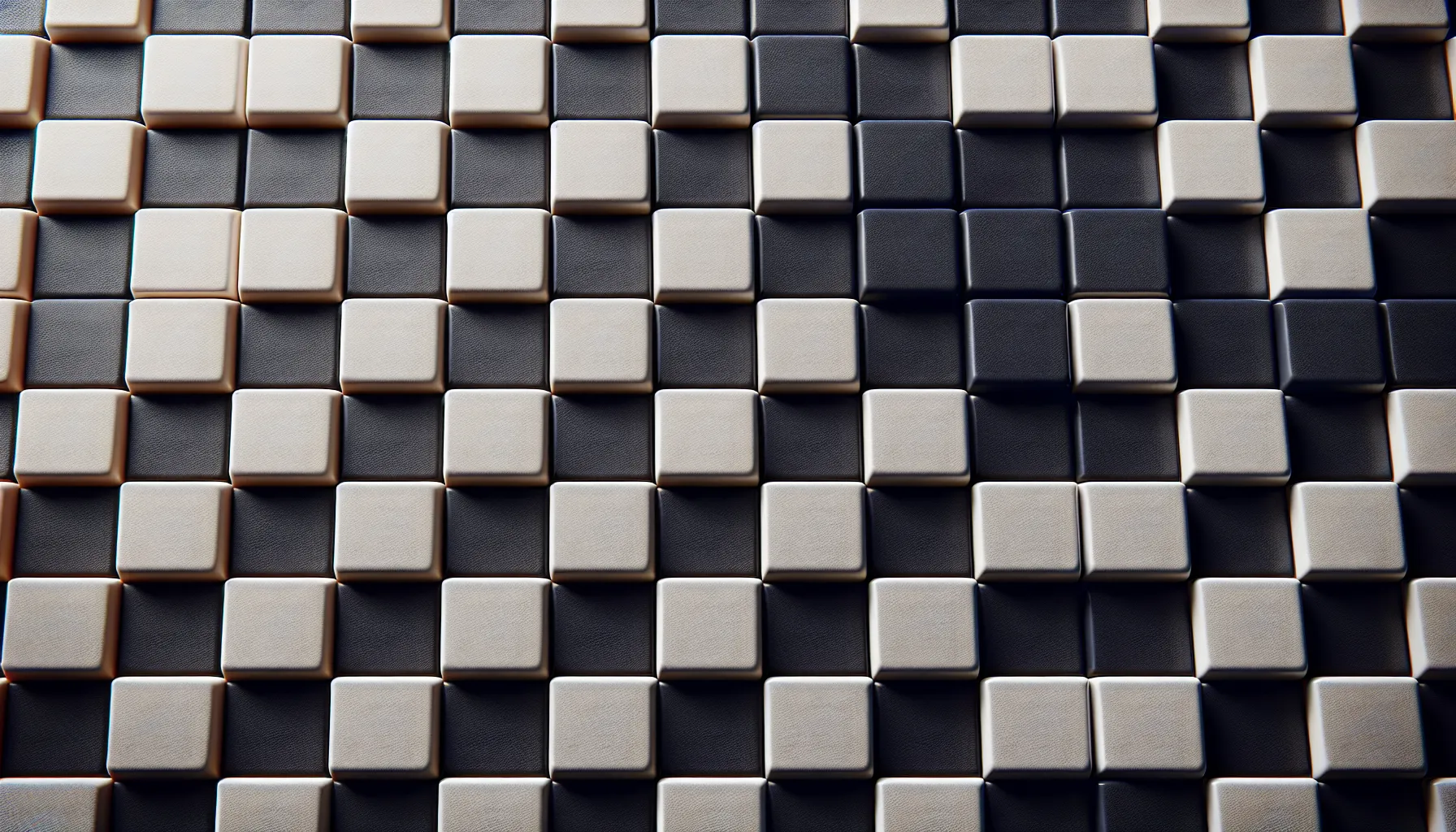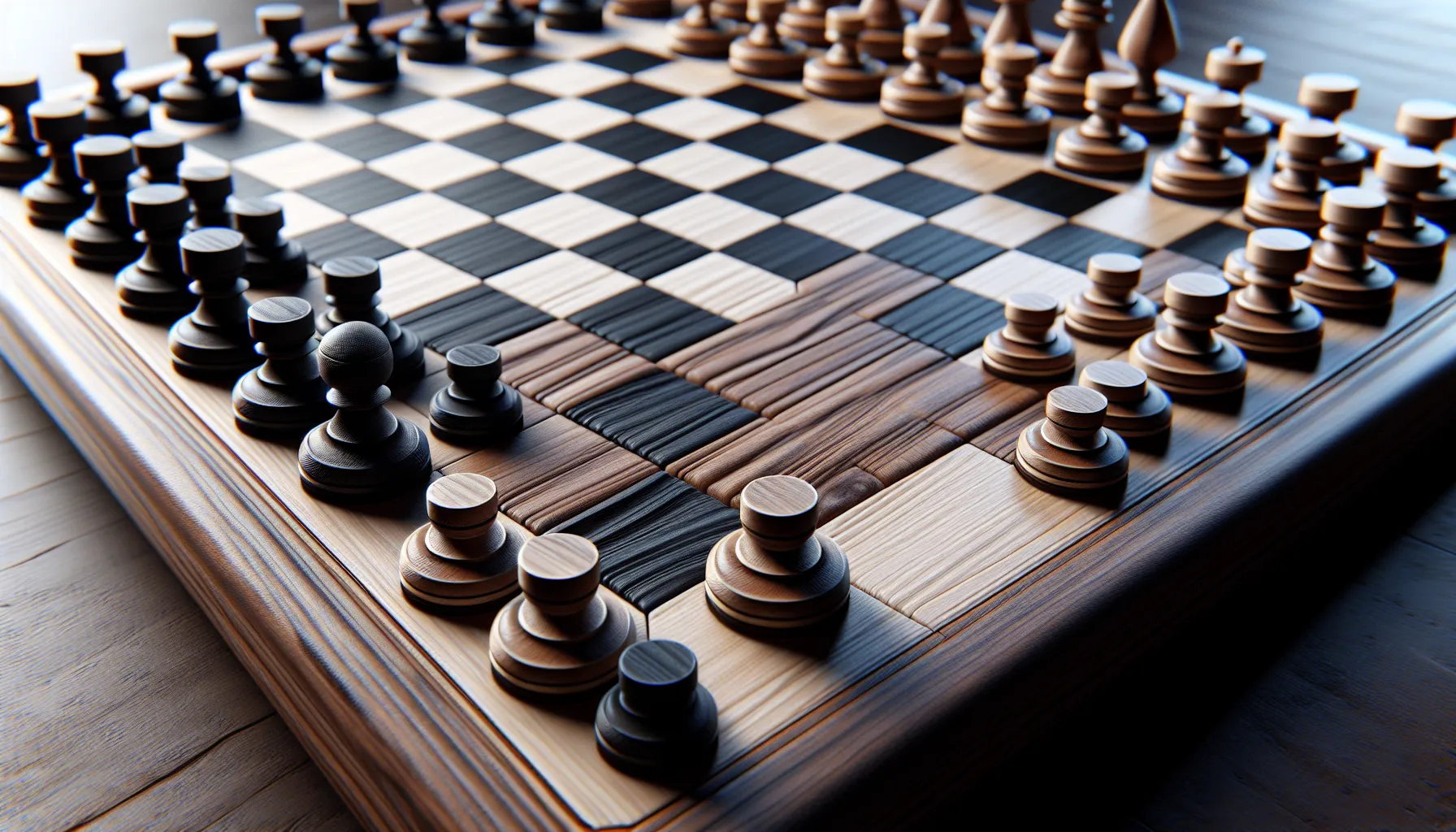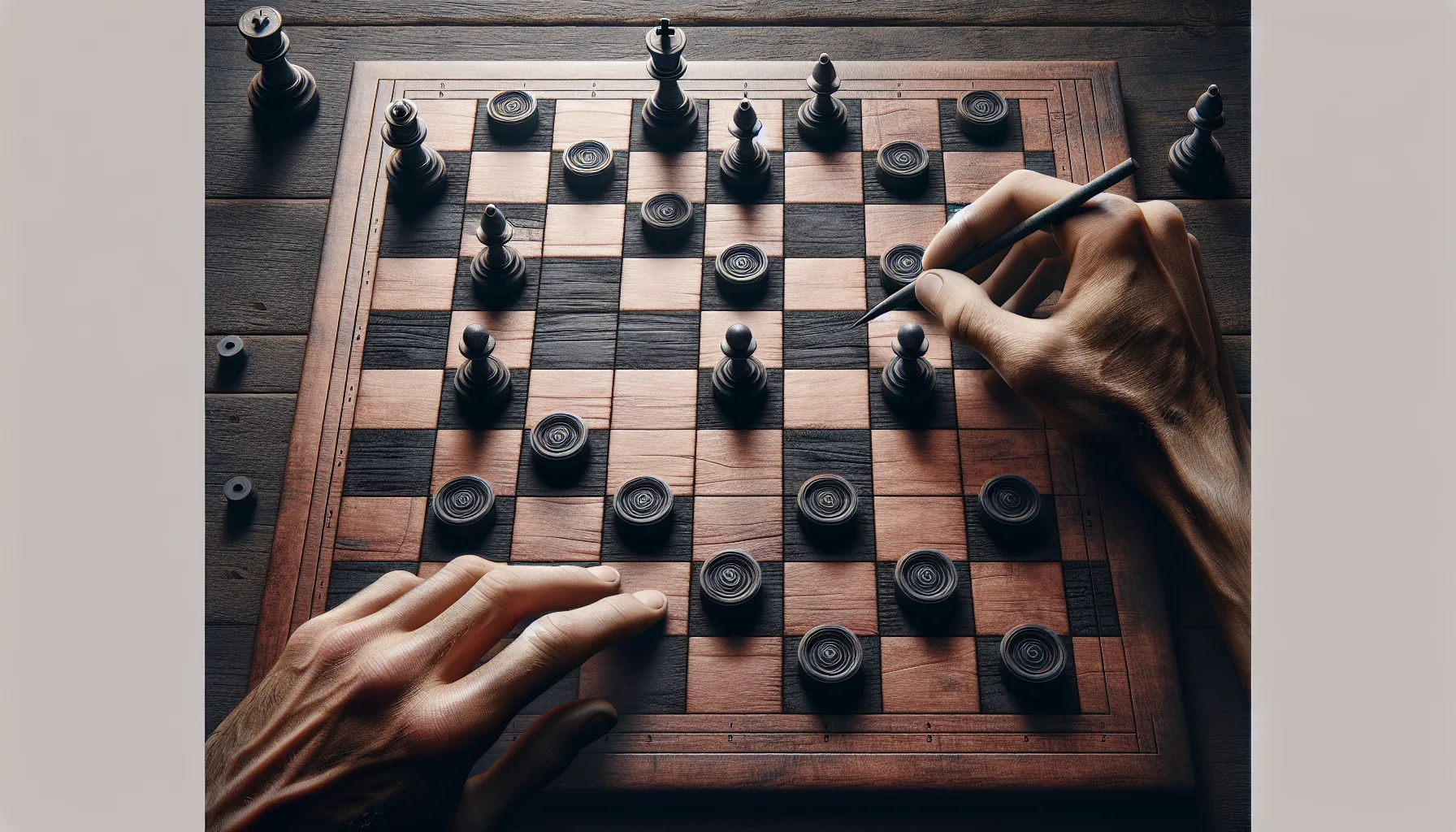How Many Squares Are on a Checkers Board? | Combien de Cases sur un Jeu de Dames Explained
Key Takeaways
- A standard checkers board consists of 64 squares, arranged in an 8×8 grid, with alternating light and dark colors.
- Only the 32 dark squares are used for gameplay, as pieces move diagonally on these spaces.
- The origins of checkers date back thousands of years, with the modern version emerging in 12th-century France, known today as « draughts » in the UK.
- Variations of checkers, such as International Checkers (10×10) and Canadian Checkers (12×12), feature larger boards with different rules.
- Strategic gameplay in checkers revolves around controlling key dark squares, particularly central and corner positions, to gain tactical advantages.
- Understanding the board layout and leveraging square placement enhances player decisions, movements, and endgame strategies.
When I first started playing checkers, I was fascinated by the simplicity of the board yet amazed at how strategic the game could get. One question that often pops up, especially for beginners, is about the number of squares on a checkers board. It’s such a basic detail, but understanding the layout is key to mastering the game.
Whether you’re just curious or diving into the rules, knowing the structure of the board can make the game feel less intimidating. Let’s break it down and uncover just how many squares make up this classic game we all know and love.
Understanding The Game Of Checkers
Checkers is a classic board game known for its simple structure and strategic depth. To truly enjoy it, understanding its origins and rules is key.
Origin Of The Game
Checkers traces its history back thousands of years, with evidence of similar games found in ancient Egypt around 3000 BC. The modern version, known as draughts in the UK, emerged in France during the 12th century. This evolved into the checkers game most of us recognize today, played on an 8×8 board.
Rules And Gameplay
The game uses a board with 64 squares, split evenly between light and dark colors. Each player starts with 12 pieces, placed on the dark squares of the three rows closest to them. The objective is to capture all the opponent’s pieces or block them from making legal moves.
Players move their pieces diagonally forward, one square at a time. Jumping an opponent’s piece by leaping over it is required when possible, which removes the piece from the board. When a piece reaches the opponent’s back row, it becomes a king and gains the ability to move diagonally forward or backward.
Breaking Down The Checkerboard

A checkerboard has a specific layout that defines the game. Understanding its dimensions and the role of color simplifies gameplay and enhances strategy.
Dimensions Of A Checkerboard
The checkerboard consists of 8 rows and 8 columns. This creates a perfect square measuring 8×8. Each square within the board is uniform in size, ensuring a consistent playing surface.
Total Number Of Squares Explained
In total, the board contains 64 squares. These are divided equally into light and dark colors. Despite all 64 squares being present, only the 32 dark-colored squares are used for gameplay in checkers.
The Role Of Colored Squares
The alternating light and dark squares dictate movement and strategy. Pieces only move on the dark squares, with the light squares serving as inactive spaces. This structure directs diagonal gameplay while maintaining order.
Common Variations In Different Checkers Variants

Checkers has several versions worldwide, and their boards and rules often differ. Understanding these variations adds depth to the game’s appeal.
International Checkers Board
The International Checkers board uses a 10×10 layout, totaling 100 squares. Only 50 dark squares are playable, supporting strategic diagonal movement. Pieces start on the first four rows for each player, offering more space for tactical decisions. This version is popular in many European countries, including the Netherlands and Russia.
English Draughts Checkerboard
English Draughts, the most played variant in the US and UK, uses the standard 8×8 board. With 32 playable squares, this version emphasizes quick strategic gameplay. Pieces begin on the first three rows, making each player responsible for capturing opponent pieces and reaching king promotion zones.
Other Regional Differences
Brazilian Checkers uses the same 8×8 board as English Draughts but follows International Checkers rules. Canadian Checkers introduces a larger 12×12 board with 144 squares and 72 playable ones, making gameplay more complex. Meanwhile, Russian Checkers allows backward movement for kings, adding a unique strategic layer.
Practical Insights For Players

Understanding the board layout and leveraging its design can enhance gameplay and improve strategic decisions in checkers. Here are key insights to help players navigate the game effectively.
Importance Of Square Placement
Success in checkers heavily depends on recognizing the significance of square placement. Each piece moves exclusively on dark squares, which form diagonal paths across the board. This creates a unique playing field where controlling key squares can dictate the game’s flow. For example, holding central dark squares offers greater mobility and defensive positioning.
I always recommend maintaining awareness of defensive and offensive pathways created by these dark square diagonals. Corner squares, like the back-row base pieces, often act as critical defensive positions, ensuring that advancing opponents face obstacles.
Strategies Related To The Board Design
Utilizing the board’s layout strategically can give players a tactical edge. The 8×8 configuration with 64 squares limits piece movement to 32 active squares, requiring players to think several moves ahead. Focusing on forming vertical stacks along diagonal paths can increase attack efficiency.
I find it effective to occupy key diagonals early, such as those leading to central dark squares, as this restricts opponent movements. It’s equally advantageous to maintain an open back-row square for potential kinging opportunities, maximizing endgame tactics. Mastering these layouts helps control match momentum while reducing vulnerabilities.
Conclusion
Checkers has always been more than just a simple board game for me. Its rich history, strategic depth, and the unique layout of the board make it endlessly fascinating. Understanding the role of the 64 squares and focusing on those 32 dark ones can truly elevate your gameplay.
Whether you’re exploring different variations or perfecting strategies on the classic 8×8 board, there’s always something new to learn. The dark squares hold the key to mastering movement, positioning, and control. With practice and a bit of patience, anyone can unlock the full potential of this timeless game.
Frequently Asked Questions
How many squares are on a checkers board?
A standard checkers board has 64 squares arranged in an 8×8 grid. However, only 32 dark-colored squares are used for gameplay since checkers pieces move exclusively on these squares.
What is the objective of the game of checkers?
The main objective in checkers is to capture all of your opponent’s pieces or block them so they cannot make a legal move. Strategic use of movement and jumps is key to victory.
Where did checkers originate?
Checkers has its origins in ancient Egypt, about 3000 BC. The modern version, known as draughts in the UK, was developed in France during the 12th century.
What are the dimensions of a standard checkers board?
A standard checkers board has 8 rows and 8 columns, forming a perfect square. The layout alternates between light and dark squares, but only the 32 dark squares are playable.
Are there different versions of checkers?
Yes, variations of checkers exist worldwide. For example, International Checkers uses a 10×10 board, while Canadian Checkers utilizes a larger 12×12 board. Other versions like Russian and Brazilian Checkers differ in rules and setups.
What strategies are important for beginners in checkers?
Focus on controlling dark squares, especially diagonal pathways. Keep pieces near the back row to block opponents and aim to occupy key corner squares for defense. Strategic movement is crucial.
Why do players only use dark squares in checkers?
In checkers, movement occurs diagonally, and dark squares create the pathways needed to play. Light-colored squares serve as inactive spaces, ensuring order on the board.
How does a piece become a king in checkers?
A piece becomes a king by reaching the opponent’s back row. Kings gain the ability to move and jump both forward and backward, enhancing their strategic value.
What makes International Checkers different from standard checkers?
International Checkers is played on a 10×10 board with 50 playable dark squares. This larger board allows for more complex tactics and extended gameplay.
Can kings move backward in all versions of checkers?
No, the ability for kings to move backward varies by version. In Russian Checkers, for instance, kings can move backward, adding a unique strategic element to the game.